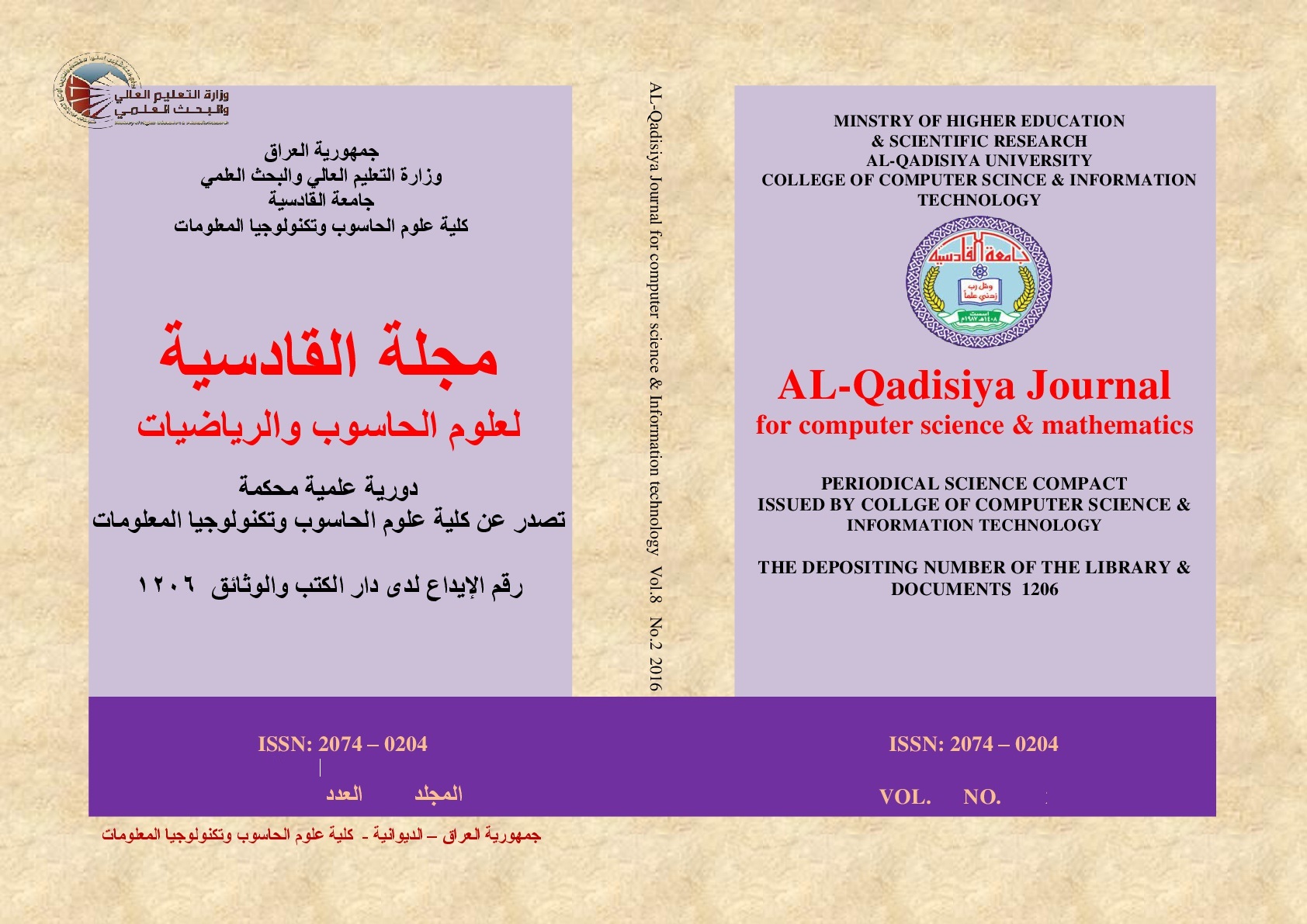Forest Fire Image Classification via Hybrid Deep Learning and Stacking Ensemble Technique
DOI:
https://doi.org/10.29304/jqcsm.2025.17.32402Keywords:
Forest Fire Classification, Hybrid Deep LearningAbstract
In recent years, forest fires have increased significantly and in an intimidating manner worldwide, thereby affecting both the environment and human life. When they are overlooked and not detected at an early stage and in a short period of time, they will spread rapidly. Accurate and early fire detection and classification are crucial for disaster control and well-timed emergencies. To address this problem, a hybrid model of pre-trained embedding and diverse classifiers to extract features, detect, and classify fire images with optimized performance and stacking with different meta-learners to improve the reliability, is applied in this paper. Three types of pre-trained models, including InceptionV3, SqueezeNet, and DeepLoc, were used for feature extraction with different classifiers: Neural Network (NN), Decision Tree (DT), and XGBoost. The proposed model, which involves stacking multiple classifiers, provides an accurate, optimal, and efficient response for fire classification. A total of 1520 images were used in this study. The best performance was achieved by integrating InceptionV3 with NN, XGBoost, and Logistic Regression as a meta-learner, yielding 98.9% accuracy, 99.9% AUC, and 98.9% for each of (F1-score, Precision, and Recall) with 97.8% MCC, with 10 False Negatives and 7 False Positives in error types. This combination of deep and machine learning with stacking shows consistent progress across all experiments, and these results can enhance and improve the quality, leading to more dependable detection and classification in safety-critical applications.
Downloads
References
L. Zhang, M. Wang, Y. Fu, and Y. Ding, “A Forest Fire Recognition Method Using UAV Images Based on Transfer Learning,” Forests, vol. 13, no. 7, p. 975, June 2022, doi: 10.3390/f13070975.
D. Han, Y. Guo, J. Wang, and B. Zhao, “Global disparities in indoor wildfire-PM2.5 exposure and mitigation costs,” Sci. Adv., vol. 11, no. 20, p. eads4360, May 2025, doi: 10.1126/sciadv.ads4360.
J. Li et al., “The persistence of smoke VOCs indoors: Partitioning, surface cleaning, and air cleaning in a smoke-contaminated house,” Sci. Adv., vol. 9, no. 41, p. eadh8263, Oct. 2023, doi: 10.1126/sciadv.adh8263.
S. Moazeni and A. Cerdà, “The impacts of forest fires on watershed hydrological response. A review,” Trees For. People, vol. 18, p. 100707, Dec. 2024, doi: 10.1016/j.tfp.2024.100707.
T. Khan et al., “Trust-driven approach to enhance early forest fire detection using machine learning,” Sci. Rep., vol. 15, no. 1, p. 14480, Apr. 2025, doi: 10.1038/s41598-025-99032-6.
R. N. Vasconcelos et al., “Fire Detection with Deep Learning: A Comprehensive Review,” Land, vol. 13, no. 10, p. 1696, Oct. 2024, doi: 10.3390/land13101696.
A. Khan, B. Hassan, S. Khan, R. Ahmed, and A. Abuassba, “DeepFire: A Novel Dataset and Deep Transfer Learning Benchmark for Forest Fire Detection,” Mob. Inf. Syst., vol. 2022, no. 1, p. 5358359, 2022, doi: 10.1155/2022/5358359.
Y. Tang, H. Feng, J. Chen, and Y. Chen, “ForestResNet: A Deep Learning Algorithm for Forest Image Classification,” J. Phys. Conf. Ser., vol. 2024, no. 1, p. 012053, Sept. 2021, doi: 10.1088/1742-6596/2024/1/012053.
A. Chopde, A. Magon, and S. Bhatkar, “Forest Fire Detection and Prediction from image processing using RCNN,” in World Congress on Civil, Structural, and Environmental Engineering, Avestia Publishing, Apr. 2022. doi: 10.11159/iceptp22.204.
S. Khan and A. Khan, “FFireNet: Deep Learning Based Forest Fire Classification and Detection in Smart Cities,” Symmetry, vol. 14, no. 10, p. 2155, Oct. 2022, doi: 10.3390/sym14102155.
A. M. Islam et al., “An Attention-Guided Deep-Learning-Based Network with Bayesian Optimization for Forest Fire Classification and Localization,” Forests, vol. 14, no. 10, p. 2080, Oct. 2023, doi: 10.3390/f14102080.
Y. Wang, L. Dang, and J. Ren, “Forest fire image recognition based on convolutional neural network,” J. Algorithms Comput. Technol., vol. 13, p. 1748302619887689, Jan. 2019, doi: 10.1177/1748302619887689.
Y. Supriya and T. R. Gadekallu, “Particle Swarm-Based Federated Learning Approach for Early Detection of Forest Fires,” Sustainability, vol. 15, no. 2, p. 964, Jan. 2023, doi: 10.3390/su15020964.
Q. Xue, H. Lin, and F. Wang, “FCDM: An Improved Forest Fire Classification and Detection Model Based on YOLOv5,” Forests, vol. 13, no. 12, p. 2129, Dec. 2022, doi: 10.3390/f13122129.
M. Prakash, S. Neelakandan, M. Tamilselvi, S. Velmurugan, S. Baghavathi Priya, and E. Ofori Martinson, “Deep Learning-Based Wildfire Image Detection and Classification Systems for Controlling Biomass,” Int. J. Intell. Syst., vol. 2023, no. 1, p. 7939516, 2023, doi: 10.1155/2023/7939516.
A. Lertsinsrubtavee, T. Kanabkaew, and S. Raksakietisak, “Detection of forest fires and pollutant plume dispersion using IoT air quality sensors,” Environ. Pollut., vol. 338, p. 122701, Dec. 2023, doi: 10.1016/j.envpol.2023.122701.
M. F. S. Titu, M. A. Pavel, G. K. O. Michael, H. Babar, U. Aman, and R. Khan, “Real-Time Fire Detection: Integrating Lightweight Deep Learning Models on Drones with Edge Computing,” Drones, vol. 8, no. 9, p. 483, Sept. 2024, doi: 10.3390/drones8090483.
A. W. Ali and S. Kurnaz, “Optimizing Deep Learning Models for Fire Detection, Classification, and Segmentation Using Satellite Images,” Fire, vol. 8, no. 2, p. 36, Jan. 2025, doi: 10.3390/fire8020036.
C. R. Madhuri, S. S. Jandhyala, D. M. Ravuri, and V. D. Babu, “Accurate classification of forest fires in aerial images using ensemble model,” Bull. Electr. Eng. Inform., vol. 13, no. 4, Art. no. 4, Aug. 2024, doi: 10.11591/eei.v13i4.6527.
H. Liang, M. Zhang, and H. Wang, “A Neural Network Model for Wildfire Scale Prediction Using Meteorological Factors,” IEEE Access, vol. 7, pp. 176746–176755, 2019, doi: 10.1109/ACCESS.2019.2957837.
Y. Li, G. Li, K. Wang, Z. Wang, and Y. Chen, “Forest Fire Risk Prediction Based on Stacking Ensemble Learning for Yunnan Province of China,” Fire, vol. 7, no. 1, p. 13, Dec. 2023, doi: 10.3390/fire7010013.
Downloads
Published
How to Cite
Issue
Section
License
Copyright (c) 2025 Israa Ali Alshabeeb

This work is licensed under a Creative Commons Attribution-NonCommercial-NoDerivatives 4.0 International License.













